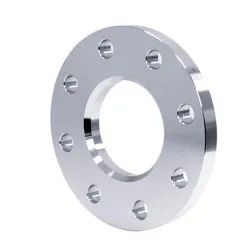-
Cangzhou Yulong Steel Co., Ltd.
-
Phone:
+86 13303177267 -
Email:
admin@ylsteelfittings.com
- English
- Arabic
- Italian
- Spanish
- Portuguese
- German
- kazakh
- Persian
- Greek
- French
- Russian
- Polish
- Thai
- Indonesian
- Vietnamese
- Zulu
- Korean
- Uzbek
- Hindi
- Serbian
- Malay
- Ukrainian
- Gujarati
- Haitian Creole
- hausa
- hawaiian
- Hebrew
- Miao
- Hungarian
- Icelandic
- igbo
- irish
- Japanese
- Javanese
- Kannada
- Khmer
- Rwandese
- Afrikaans
- Albanian
- Amharic
- Armenian
- Azerbaijani
- Basque
- Belarusian
- Bengali
- Bosnian
- Bulgarian
- Catalan
- Cebuano
- China
- China (Taiwan)
- Corsican
- Croatian
- Czech
- Danish
- Esperanto
- Estonian
- Finnish
- Frisian
- Galician
- Georgian
- Kurdish
- Kyrgyz
- Lao
- Latin
- Latvian
- Lithuanian
- Luxembourgish
- Macedonian
- Malgashi
- Malayalam
- Maltese
- Maori
- Marathi
- Mongolian
- Myanmar
- Nepali
- Norwegian
- Norwegian
- Occitan
- Pashto
- Dutch
- Punjabi
- Romanian
- Samoan
- Scottish Gaelic
- Sesotho
- Shona
- Sindhi
- Sinhala
- Slovak
- Slovenian
- Somali
- Sundanese
- Swahili
- Swedish
- Tagalog
- Tajik
- Tamil
- Tatar
- Telugu
- Turkish
- Turkmen
- Urdu
- Uighur
- Welsh
- Bantu
- Yiddish
- Yoruba

Dec . 18, 2024 10:06 Back to list
ansi flange standard
Understanding ANSI Flange Standards A Comprehensive Overview
Flanges play a crucial role in the piping industry, allowing for the connection of pipes, valves, and other equipment. Among the various standards that govern flange design and application, the American National Standards Institute (ANSI) flange standard is one of the most widely recognized and applied globally. This article will delve into ANSI flange standards, exploring their importance, specifications, and applications.
What is ANSI?
The American National Standards Institute (ANSI) is a private non-profit organization that oversees the establishment and dissemination of consensus standards for products, services, processes, and personnel in the United States. ANSI's mission includes fostering the development of voluntary consensus standards for various industries, ensuring safety, reliability, and efficiency.
Overview of ANSI Flange Standards
ANSI standards for flanges, particularly ANSI B16.5 and ANSI B16.47, set the specifications for the design, materials, dimensions, and testing of flanges used in piping systems. These standards classify flanges based on their pressure ratings and sizes, enabling engineers and designers to select the appropriate components for different applications.
Types of ANSI Flanges
The ANSI flange standards encompass several types of flanges, which include
1. Welding Neck Flanges These flanges are designed to be welded to the piping, providing high strength and integrity in high-pressure applications.
2. Slip-On Flanges Slip-on flanges are easy to install and are commonly used in low-pressure systems. They slip over the pipe and are then welded.
3. Blind Flanges Used to seal the end of a piping system, blind flanges allow for easy access to the piping system without the need for disassembly.
ansi flange standard

4. Socket Weld Flanges These flanges are welded to the inside of the pipe, providing a smooth interior surface which is essential for high-pressure applications.
5. Threaded Flanges Also known as screwed flanges, these flanges can be attached to pipes without welding, making them suitable for temporary connections.
Specifications and Codes
Each type of flange is defined by its ANSI standard, with specifications regarding dimensions, materials, pressure-temperature ratings, and testing procedures. For example, ANSI B16.5 specifies flanges for nominal pipe sizes ranging from 1/2 inch to 24 inches, while ANSI B16.47 covers larger sizes from 26 inches up to 60 inches. The pressure ratings of the flanges are categorized into classes such as 150, 300, 600, 900, 1500, and 2500, indicating their ability to withstand varying levels of pressure.
The material specifications align with the flange’s intended application, with common materials including carbon steel, stainless steel, and alloy materials. Compliance with these standards is essential to ensure safety and reliability in piping systems.
Applications of ANSI Flanges
ANSI flanges are utilized across a wide range of industries, including oil and gas, chemical processing, water treatment, and power generation. They provide a robust solution for connecting different components in a piping system, ensuring that the system can handle the necessary pressure and temperature conditions.
In addition to their mechanical function, ANSI flanges facilitate the maintenance and inspection of piping systems. By allowing sections of a pipeline to be easily connected and disconnected, flanges enhance the ability to conduct routine checks without extensive disassembly.
Conclusion
In summary, ANSI flange standards provide a critical framework for the design, manufacture, and application of flanges in industrial piping systems. Understanding these standards is vital for engineers and designers as they select the appropriate flange types and sizes for their specific applications. By adhering to ANSI standards, professionals in the industry can ensure the safety, reliability, and efficiency of their piping systems.
Latest news
-
ANSI 150P SS304 SO FLANGE
NewsFeb.14,2025
-
ASTM A333GR6 STEEL PIPE
NewsJan.20,2025
-
ANSI B16.5 WELDING NECK FLANGE
NewsJan.15,2026
-
ANSI B16.5 SLIP-ON FLANGE
NewsApr.19,2024
-
SABS 1123 FLANGE
NewsJan.15,2025
-
DIN86044 PLATE FLANGE
NewsApr.19,2024
-
DIN2527 BLIND FLANGE
NewsApr.12,2024
-
JIS B2311 Butt-Welding Fittings LR/SR 45°/90° /180°Seamless/Weld
NewsApr.23,2024











